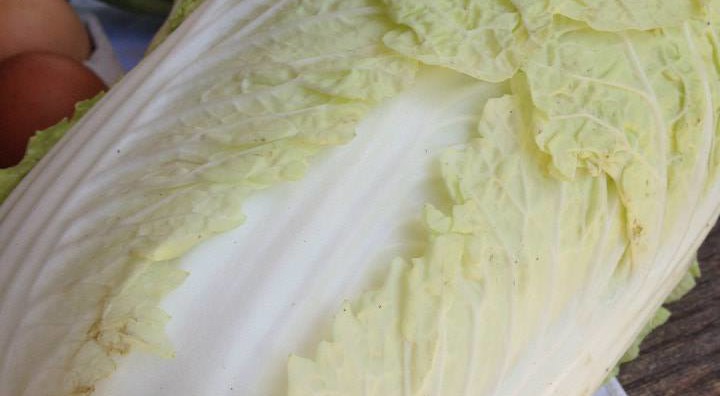Kimchi is traditionally made with Napa cabbage, and is a great way to use daikon radishes. If you only have “regular” cabbage – just substitute it for the Napa in the recipe.
The Korean chili powder is pretty essential. You can find it at the Buford Highway Farmers Market, but also at grocers that specialize in Korean foods.
The recipe comes from “Tart and Sweet” by Kelly Geary and Jessie Knadler. Add some sliced mustard greens if you like, that’s also a traditional addition.
Ingredients:
2 Napa cabbages, weighing 3 to 4 pounds total 1/3 cup salt 2 tablespoons soy sauce 1/4 cup fish sauce 1 1/2 cups Korean chili powder, also called gochugaru 2 bunches of scallions, thinly sliced 1/4 cup garlic, minced 1/4 cup ginger, minced 4 cups thin carrot sticks (optional), about 3 inches long
Preparation:
Cut the cabbages lengthwise into quarters, then across into thick ribbons. Put the cabbage in a big bowl and use your hands to toss it with the salt. Pour in cold water to cover the cabbage. It will float, so invert a plate on top, or a zipper-lock plastic bag of water, or whatever is handy, to keep it submerged. Cover the bowl with a towel and leave it out overnight.
The next day, use your hands to lift the cabbage out of the brine and put it in a big bowl. (Keep the brine, too.) In a small bowl, make a chili paste of the soy sauce, fish sauce and Korean chili powder. (Check the ingredients list to make sure you get pure chili powder, not the kind that has salt mixed in.)
Add the chili paste to the cabbage along with the scallions, garlic, ginger and, if you like, the carrot sticks. Mix the kimchi well and pack it into hard plastic or glass containers. Pour in enough of the brine to cover the vegetables.
Cover the containers and leave out at room temperature (but not more than 75 degrees, or it ferments too fast). Taste it after three or four days, and every day after. As the vegetables shrink, the kimchi can be combined in ever-smaller containers; just keep it covered with brine.
When it tastes good to you, it’s done.

